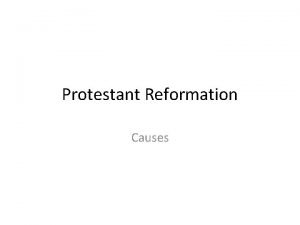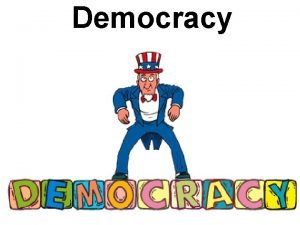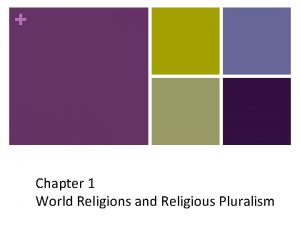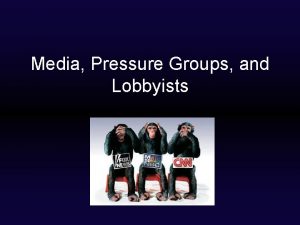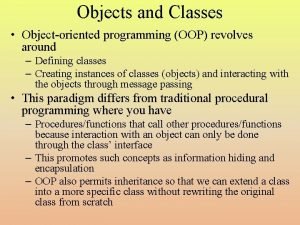Policy design implementation and pluralism Implementation revolves around










- Slides: 10

Policy design – implementation and pluralism Implementation revolves around taking a policy design – e. g. , distributing a benefit; regulating some activity – and putting it into practice through a policy instrument or strategy. Effective implementation requires: Sound problem analysis and diagnosis (is the problem well-defined; do we know what it is we’re trying to address? ) Good, useful, up-to-date information on the issue (do we have adequate data to understand how different audiences will be affected by the policy? ) Insight regarding the policy’s feasibility (i. e. , what are the challenges faced by those responsible for carrying it out? )

Defining the problem – wetland loss

Is the problem well-defined? Clean Water Act (as amended) requires Congress to instruct EPA to reduce loss of natural wetlands by: discouraging further wetland destruction and or filling. Urban development, rural development, silviculture, and conversion to deepwater (e. g. , the disappearance of coastal wetlands or flooding to create reservoirs) all contributed to wetland loss. Under President George H. W. Bush (1989 -1993) EPA was instructed to develop “no net loss” rule – essentially, balance unavoidable losses of habitat with their replacement on a project-by-project basis. Problem? Different methods used in past to classify wetland types. Methods have improved, and acreage data have been adjusted, resulting in changes in overall wetland base. However, we cannot be certain that the trends reported in this data are accurate – according to Dahl – nor that a wetland can be “replaced. ”

Adequacy of data – audience impacts* SNAP = Supplemental Nutrition Assistance program/USDA

Adequacy of data and audiences affected - issues In large part exacerbated by current recession, participation rate in federal food stamp program has dramatically increased. Eligibility – household monthly income no more than 160% of federal poverty level – for average household of four approx. $1500/month. Benefits can be as high as $200/per person/per month. Unanticipated consequences: Families needing SNAP have needs that cannot be met by food stamps alone –“food pantries” and local food ministries have been overwhelmed by demand (not recorded in SNAP data). In 2009, Congress funded Child Nutrition Act; which expands school lunch program in poorer school districts; to pay for program, they reduced food stamp funding by $4 billion starting 2014 Challenges? Unless recession lessens by 2014, per family food stamp benefits may have to be reduced.

What makes policy design “pluralistic? ” To be effective, a policy has to meet several criteria during the implementation phase. Most of all, it has to: Find a way to bring about a change by compelling or convincing people to do things a different way : we call these inducements. It has to provide the policy-maker with sufficient information or feedback to allow critical “re-adjustments” or reforms (e. g. , school testing programs). It has to allow sufficient discretion among those who apply or implement the policy to permit flexibility, avoid frustration among those charged with carrying out the policy, and gain the public’s confidence. These complex factors make implementation a multi-stakeholder process.

Inducements – general implementation strategies Strategy Flexibility in achieving goals Clarity/transparency Centrally imposed rules – what we usually think of as “regulation” Inflexible/provides little discretion for either “street level” bureaucrats or the audiences affected by policy (true for much law enforcement policy) Market Incentives or economic Flexible for the street-level inducements (e. g. , tradable official and affected policy pollution rights, “cap and trade” audiences – much discretion is programs permitted. Voluntary partnerships between state and non-state entities (e. g. , EPA performance partnership agreements, Federal Facility Compliance Agreements. Highly flexible/negotiable for both sets of actors – the agreement has the force of law once negotiated Education/information. , e. g. , air quality alerts; drains-to-stream signs, labeling of consumer product contents. Highly flexible in that instruments can be tailored to variety of audiences and contexts. Evaluation Being formal, rules tend to be clear and unambiguous – and thus, conditions for compliance are well-known (e. g. , traffic laws) To determine effectiveness - it is easy to evaluate compliance but much more difficult to measure if the policy outcome is effective (i. e. , solving the problem) Strategy sometimes unclear – How does one assess e. g. , at what price level should compliance? Is progress charges/fees be set? How does measured by rate of one assess compliance? participation, or by achieving a level of change – or both? How much gain is genuine, and how much is a “pecuniary effect? ” Critics charge such agreements Oftentimes, policy analysts want tend to be negotiated in secret; to evaluate process of out of public view – candor is an agreement – pay less attention advantage in agreement, but a to results agreements bring problem in enforcement about (partly a function of time). Can be clear or unclear – must be careful in crafting message for the affected audience – and ensure you prescribe a solution – audiences can choose to ignore warnings! Because it can be ignored, or misunderstood, hard to assess effectiveness – we know it works when the information is relevant (e. g. , saving money

Some “inducement” challenges - feasibility For a policy to be implementable, one has to have resources sufficient to carry out a strategy. Acquiring resources is a three-fold problem: Collect revenues (taxes/fees, permits) – this is a challenge in many developing nations, but is also an issue where a policy strategy requires “self-funding” as in many developed polities(e. g. , Social Security, highway trust funds). Hiring, training, equipping personnel to regulate, bestow benefits. Gather information to carry out policy, monitor effectiveness, e. g. : Is long-term trend data available? Are presumed relationships compatible; can causality be firmly established? Are the data and conclusions publically trustworthy and high in confidence?

• Obama Administration is proposing – to alter funding mechanism for highways and other transit (FY 2012 DOT budget). • Wants to replace current highway trust fund with "transportation trust fund" that will have separate accounts for highways, transit, high-speed rail, “national infrastructure bank. ” • In near term highways would see only a slightly smaller share of overall national transportation funds that also go to intercity transit and passenger rail. • Longer term, move away from dedicated highway trust fund signals administration's desire to wean the country away from the automobile. • Transportation Secretary Ray La. Hood wants to streamline disparate pots of money into a larger pool that will make DOT more nimble in funding good projects. Federal Highway Trust Fund (1956 origins)

Feedback and policy re-adjustment Principal-agent theory – top & street-level officials (and the public) define problems differently – partly a function of “local” vs. “expert” knowledge (e. g. , anti-poverty, community development programs). According to PAT, feedback is affected by what “subordinates” think principals want to hear – and the degree to which “principals” rely on subordinates for information about what’s really occurring “on the ground. ” Examples? Law enforcement: “Three strikes policy” – cop on the beat, prosecuting attorneys, penal officials. Education: “No-child left behind” – classroom teachers, administrators. Disaster preparedness – emergency responders, health care workers. Effective feedback occurs when street-level bureaucrats (SLBs) and upper-level officials (ULOs) freely communicate; SLBs feel they can share information with ULOs honestly, without penalty or retribution.




